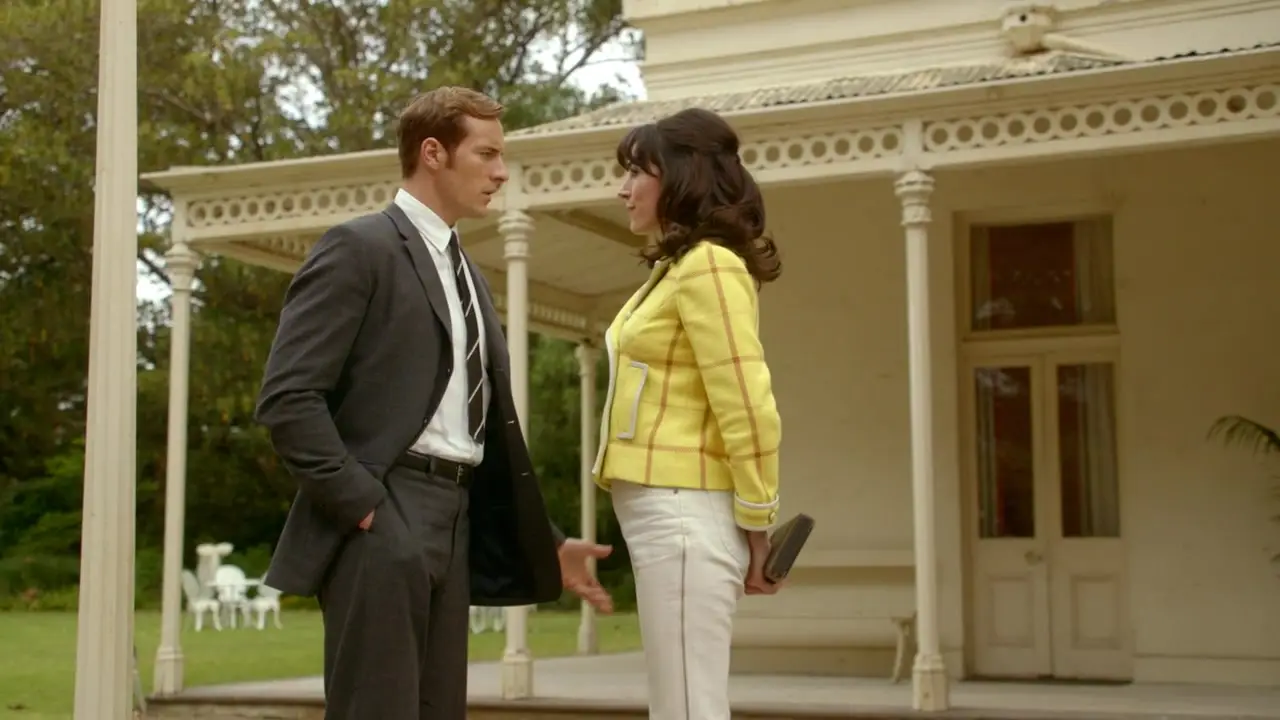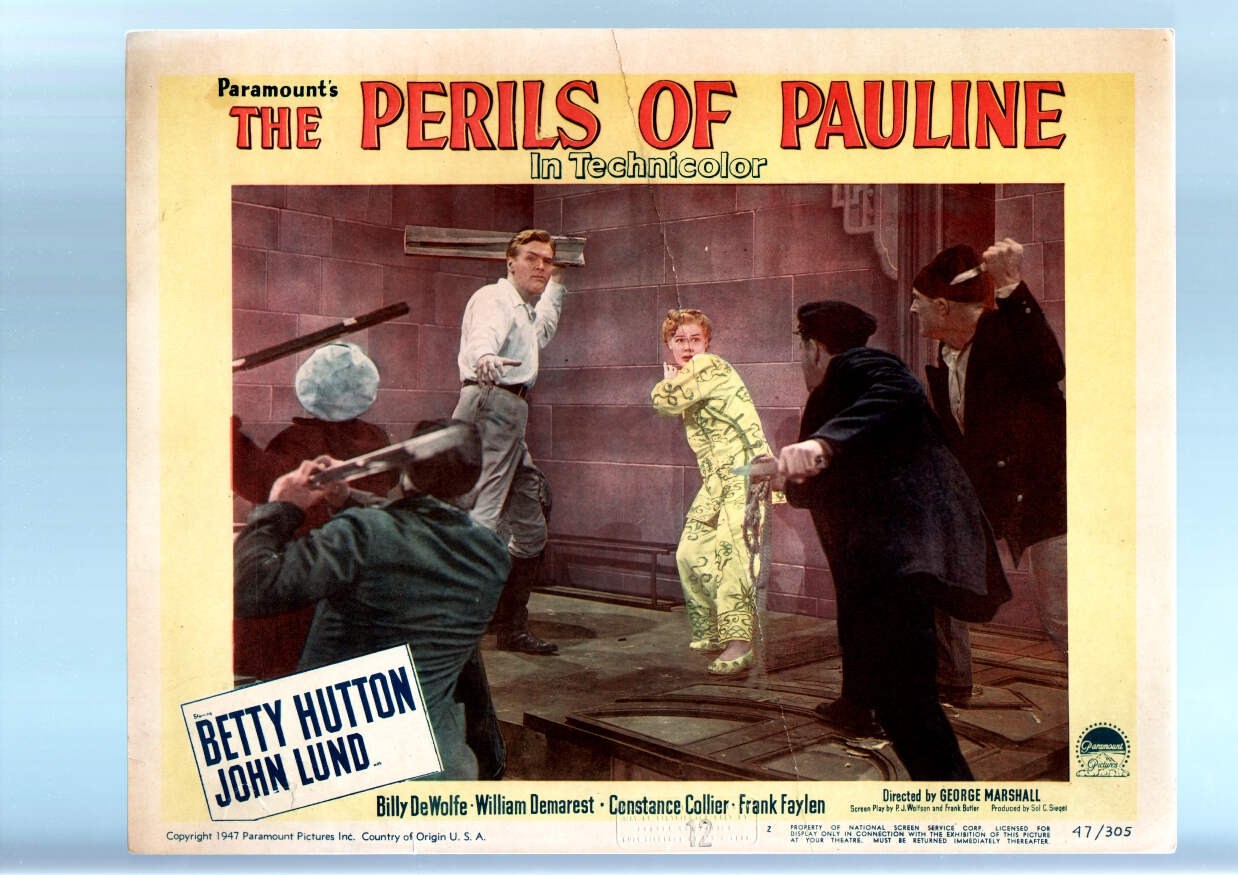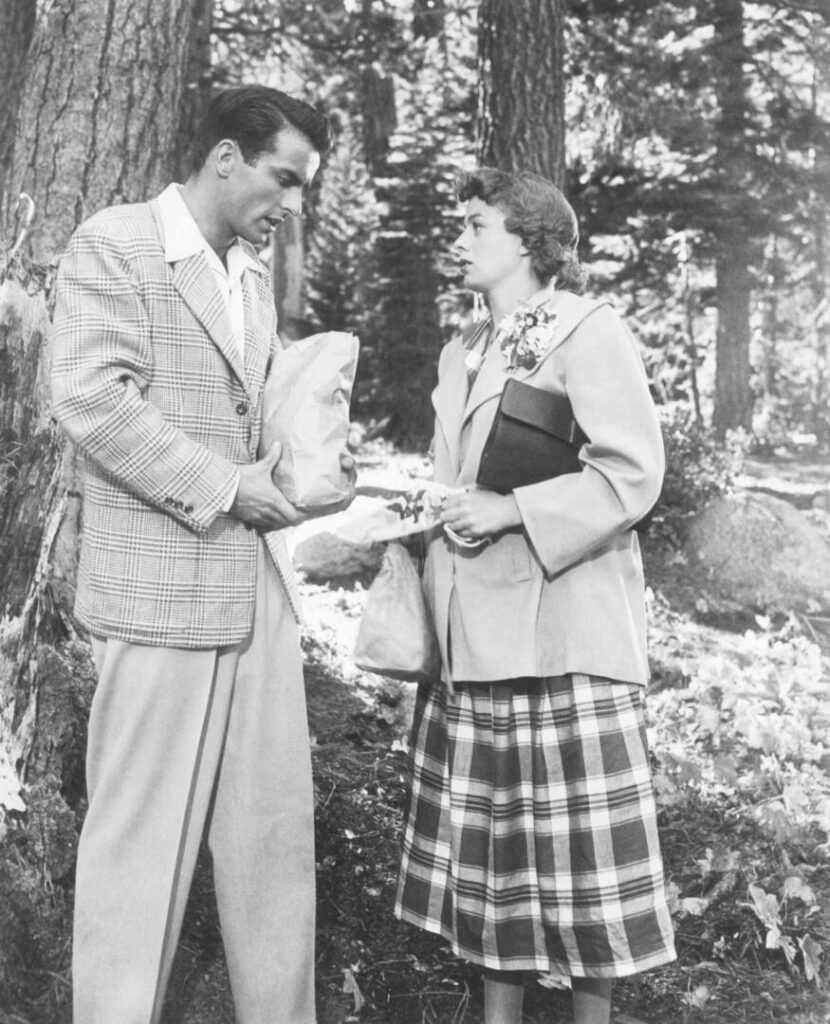|
|
Post by BunnyWhit on Nov 15, 2024 4:15:40 GMT
PART 6
Welcome back! I had a nasty cold which kept me from looking at all these goodies for several days, but I'm now back at it. Let's take a look at a few more costumes from the exhibit.
* * * * * * * * * * * * * * *
Fred Astaire wore this costume in Holiday Inn (1942).
Astaire wears this costume for the Washington’s birthday number in the film. This cream silk satin habit à la française is lavishly ornamented with braid and suede leaves and dotted with sequins on both the waistcoat and the cutaway. The turned back cuffs are lined with gold jacquard. The breeches have functional gold buttons and gold buckles with rhinestones to fasten just below the knee. To be perfectly frank, I think this suit looks quite comfortable.
This costume is another example of a design choice made for film. Is it historically appropriate*? Yes. Is it of the correct time period? No. Is it meant to be? Again, no.
Head’s choice of this costume for Astaire and for the gown worn by Marjorie Reynolds as Martha Washington are designed to make audiences recognize that the characters are from an earlier time. Both of the garments in this dance scene seem “right” to us because we know instantly that garments like this existed. That is all that is necessary for the scene to work, and in that, the style of this suit is the perfect choice.
My limited knowledge of 18th century gentlemen’s fashion tells me that the style of Astaire’s jacket is from the late 1750s to the early 1760s, not the 1790s when Washington was president, which I assume is the period meant to be represented in the film. The gown for Reynolds looks to be of the mid to latter part of the 1770s. The only reason I find Head’s design choice for the film to be questionable is that Washington was well-known as a fashion plate. He was a firm believer in showing station through fashion, and there was no way he’d have worn a suit decades out of fashion.
*Please note that I try always to use the term “historically appropriate” rather than “historically accurate.” I feel it is a much better definition of a garment that is meant to look like one from a previous time because there is no way modern sensibilities, materials, techniques, and interpretations can make something that could be, for example, confused for the real thing. Even the use of historical fabrics and techniques must yield an appropriate rather than accurate garment, as it is made with modern hands. My use of appropriate rather than accurate is not a mark of disrespect or dismissal; rather it is an attempt to actually elevate the artistry that goes into creating a representation of any historical garment.
* * * * *
Here is another costume worn by Betty Hutton in The Perils of Pauline (1947).
Hutton wears this Asian-inspired pajama in a scene in which she is filming an episode as Pauline. This silk satin ensemble is trimmed with gold braid, bugle beads and sequins in a lovely floral motif. I especially like that the sleeves and pant legs are pieced rather than cut on in one piece. This is stylistically appropriate and adds weight and movement which provides comfort and flexibility for the wearer. I would (I believe näively) call this a cheongsam-style pajama set and leave it at that, for Asian garments and their proper use is complex, and I am not well-versed.
* * * * *
This costume was designed for Mary Martin in Kiss the Boys Goodbye (1941).
There is a publicity still of Martin in this ensemble:
And here is Martin in the ensemble on the cover of Song Hits magazine for September 1941:
This costume is at The Collection of Motion Picture Costume Design, and they display the original ensemble which is the jacket over wide harem pants made from the same cream silk:
This is more like it!
There is only one scene in the film in which Martin appears in lounging attire, and it is a light colored gown and robe with embroidered flowers on the bodice and sleeves. That garment is much more representative of the character than is this costume, which does not appear in the film. I suspect the more feminine garment took the place of this one, or perhaps a scene was cut.
* * * * *
Here is a costume worn by Audrey Hepburn in Funny Face (1957).
You will recognize this as the ivory silk suit worn by Hepburn in the fashion show portion of the film. Its clean line is elegant and timeless. The princess seamed jacket has three-quarter sleeves, which was not only extremely popular in the period but also looked well on Hepburn’s thin frame. The slightly funnel neckline is my favorite aspect of the garment because it is enough of the shape to accomplish balancing Hepburn’s long neck, but it is not overdone, keeping the suit classic rather than trendy. I also happen to be a huge fan of a good crocheted button, and this suit gives me that joy.
Head had won the Academy Award for Sabrina (1954), some say based nearly entirely on this gown:
The fact is that this gown was designed by Hubert de Givenchy, not by Head. Hepburn had approached the fashion designer to create her costumes for the film, but he was unable to do so. Instead, he gave Hepburn the choice of his atelier, and this gown was among the things she selected to wear in the film. Givenchy did not receive a credit for the film, and Head accepted the Academy Award for Best Costume Design, Black-and-White, also without crediting the designer. Funny Face was the next film for Hepburn, and from this film forward, she wore Givenchy’s designs. The Oscar nomination for this film was shared by Head and Givenchy.
* * * * *
This costume was worn by Shelley Winters in A Place in the Sun (1951).
This was one of my favorites in the exhibit because it really surprised me. I’d never have guessed this cotton dress to be this beautiful teal color. There is a ric-rac detail at the yoke and a modest V-neck with a wide spread collar. The simple dirndl skirt completes the "regular gal" look of the dress. The swing jacket is wool gabardine and does not fasten. I’d wear this in a heartbeat.
A Place in the Sun was another of Head’s Oscar wins. The film was released two full years after her design work, so her aim was to create garments in 1949 that would still look fresh in 1951.
While we're at it, let's give a big shoutout to Montgomery Clift's casual attire here. Spread collar shirt with pleated trousers topped with a casual straight cut slouch in glen plaid. Looks comfy enough to be pajamas!
* * * * * * * * * * * * * * *
I hope you enjoyed this part of the tour. I shall return shortly with the next part.
|
|
|
|
Post by NoShear on Nov 15, 2024 17:45:00 GMT
I recently saw 1949's "The Passionate Friends" and 1962's "Experiment in Terror" and noticed that Ann Todd, in the first, and Lee Remick, in the second, wore similar boldly patterned collarless coats. I know a little bit about men's clothing, but not much at all about women's, so all I can say is I think they are very cool and worth mentioning. BunnyWhit, others, thoughts?
Lee Remick:
  Caught my first viewing of MS FISHER'S MODERN MURDER MYSTERIES last night, BunnyWhit and Fading Fast:  BunnyWhit and Fading Fast, I recently was passed by a young woman sporting a winter jacket that resembled the aforementioned dress pattern and even seemed to be of the same coloring - apparently timeless styling:  |
|
|
|
Post by Fading Fast on Nov 15, 2024 18:38:11 GMT
Caught my first viewing of MS FISHER'S MODERN MURDER MYSTERIES last night, BunnyWhit and Fading Fast:  BunnyWhit and Fading Fast, I recently was passed by a young woman sporting a winter jacket that resembled the aforementioned dress pattern and even seemed to be of the same coloring - apparently timeless styling: 
What BunnyWhit has done for me is, one, greatly improved my understanding and appreciation of these garments and, two, she has me immediately thinking about so many things when I see something for the first time - texture, pattern, alignment, stitch, shoulder, etc. - that my tiny brain goes tilt sometime trying to absorb all the details. I have to step back and remind myself to just appreciate the article of clothing. I saw, what I'm pretty sure was, a model walking by yesterday when I was out. She was wearing a long camel hair coat (yesterday was one of the first truly cold days we've had in NYC). I was so busy, first, noticing her and then trying to check out details of the coat that I almost missed just enjoying the full sweep of a beautiful women wearing a beautiful coat.
|
|
|
|
Post by BunnyWhit on Nov 15, 2024 19:30:45 GMT
What BunnyWhit has done for me is, one, greatly improved my understanding and appreciation of these garments and, two, she has me immediately thinking about so many things when I see something for the first time - texture, pattern, alignment, stitch, shoulder, etc. - that my tiny brain goes tilt sometime trying to absorb all the details. I have to step back and remind myself to just appreciate the article of clothing. I saw, what I'm pretty sure was, a model walking by yesterday when I was out. She was wearing a long camel hair coat (yesterday was one of the first truly cold days we've had in NYC). I was so busy, first, noticing her and then trying to check out details of the coat that I almost missed just enjoying the full sweep of a beautiful women wearing a beautiful coat.
[beautiful woman walks by on the street]
[throngs of people mesmerized by her]
FadingFast [who only really saw her after she passed by]: "Was that a mac or a trench?" |
|
|
|
Post by NoShear on Nov 15, 2024 21:53:19 GMT
What BunnyWhit has done for me is, one, greatly improved my understanding and appreciation of these garments and, two, she has me immediately thinking about so many things when I see something for the first time - texture, pattern, alignment, stitch, shoulder, etc. - that my tiny brain goes tilt sometime trying to absorb all the details. I have to step back and remind myself to just appreciate the article of clothing. I saw, what I'm pretty sure was, a model walking by yesterday when I was out. She was wearing a long camel hair coat (yesterday was one of the first truly cold days we've had in NYC). I was so busy, first, noticing her and then trying to check out details of the coat that I almost missed just enjoying the full sweep of a beautiful women wearing a beautiful coat.
[beautiful woman walks by on the street]
[throngs of people mesmerized by her]
FadingFast [who only really saw her after she passed by]: "Was that a mac or a trench?" Laughing, BunnyWhit!! |
|
|
|
Post by kims on Nov 21, 2024 1:47:59 GMT
Love the designs of Head, Adrian and Cassini, but why does Dolly Tree get lost in the shuffle. Didn't she design for Harlow and Myrna Loy among others?
|
|















